Disclaimer: Psilocybin is a largely illegal substance and we do not encourage or condone its use where it is against the law. However, we accept that illegal drug use occurs and believe that offering responsible harm reduction information is imperative to keeping people safe. For that reason, this guide is designed to enhance the safety of those who decide to use psilocybin.
With the growing interest in the medicinal benefits of psilocybin for treating a range of mental health problems, it follows that there is greater interest in where psilocybin comes from. Psilocybin is one of the classic psychedelics, a natural compound found within psilocybin-containing mushrooms from the genus Psilocybe. Psilocybe is a diverse genus, with species found on all continents (except Antarctica) within various habitats. It turns out that psilocybin-containing fungi are quite widespread with other genera—including Gymnopilus, Inocybe, and Conocybe—also containing psilocybin.
Fungi have always had an association with some element of the magical, and as we investigate these associations in more detail, we find their use in surprising places. The use of Psilocybe in Central America and Amanita muscaria among the shamans of Siberia is well documented. There is also some evidence that the fungus ergot was part of the Eleusinian mysteries. Records of other fungi used in ceremony appear in academic literature, including a Boletus used in the curious “mushroom madness” of the Kuma of New Guinea, and the use of a Lycoperdon puffball in northern Mexico among the Tarahumara of Chihuahua for divination. Despite mentions in literature, some references lack detail, with further investigations revealing either ritual practices or other entheogens as the cause for the altered states of consciousness.
Grow 1 Year's Worth of Microdoses in Just 6 Weeks
Third Wave partnered with top mycologists to create the world’s easiest and best mushroom growing program (kit, course, and expert support).
- Pre-sterilized and sealed
(ready to use out of the box) - Step-by-step video and text course
- Access to growing expert in community
- Make your first harvest in 4-6 weeks
- Average yield is 1 - 4 ounces (28-108g)
- Fits in a drawer or closet
- Enter info for Third Wave discounts:
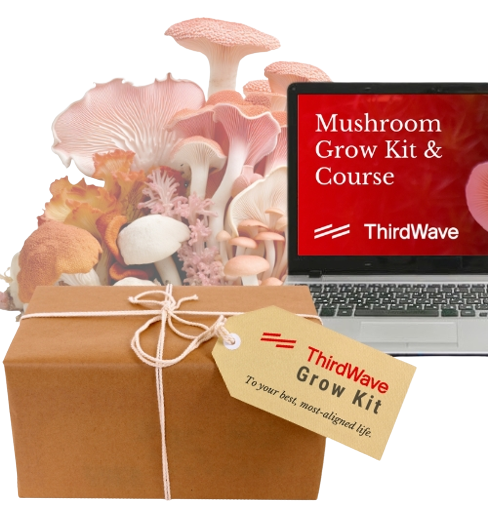
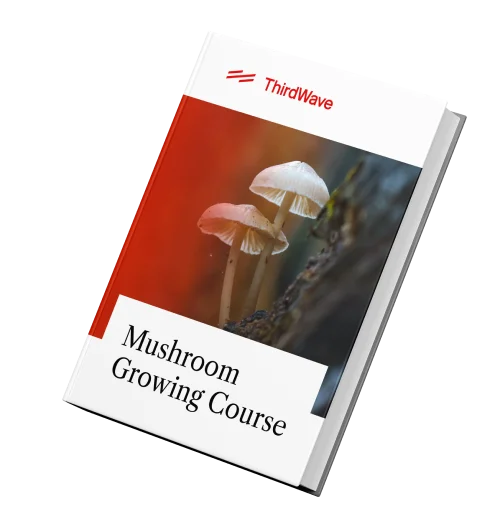
Grow 1 Year's Worth of Microdoses in Just 6 Weeks
Third Wave partnered with top mycologists to create the world’s easiest and best mushroom growing program (kit, course, and expert support).
- Pre-sterilized and sealed
(ready to use out of the box) - Step-by-step video and text course
- Access to experts in community
- Make your first harvest in 4-6 weeks
- Average yield is 1 - 4 ounces (28-108g)
- Fits in a drawer or closet
- Enter info for Third Wave discounts
Psilocybin as a classic psychedelic
Psilocybin and psilocin are the main active compounds in “magic mushrooms”. Psilocybin is the prodrug for psilocin: psilocin can cross directly over the blood-brain barrier, while enzymes in the body dephosphorylate psilocybin, converting it into psilocin. Psilocybin is an indole alkaloid that is structurally very similar to serotonin. Psilocybin is considered one of the classic psychedelics because it is structurally related to the neurotransmitters serotonin or dopamine (which are 5-HT2A agonists). Other classic psychedelics include LSD and mescaline.
The psychedelic effects include heightened/altered sensory experiences of vision, sound, and physical sensations. Other effects include a distorted sense of time, increased empathy and connection to others and the natural world, ego dissolution, and mystical/spiritual experiences. Effects of psychedelics are dose and setting dependent; they can evoke a state of inward reflection that can be deeply personal and existential. Side effects may include disorientation, increased heart rate, anxiety, and paranoia, which create what some people call a “bad trip”. Some people have reported long-term effects from these negative experiences, such as flashbacks, while others return to baseline without further issues.
The varieties of magic mushrooms
“Magic mushrooms” can also be referred to as neurotropic fungi, a group of fungi that produce “psychoactive” effects. This group includes species containing psilocybin, species containing ibotenic acid, the ergot fungi, and species used in a ceremonial context without reliable chemical studies. The most well represented group is the psilocybin-containing group.
All psilocybin-containing mushrooms, bar one, can be described as agarics, which means that they are gilled mushrooms with a cap and stem. The main type of mushroom that we refer to as “magic” are the genus Psilocybe—in 2005 Guzman, author of “The Genus Psilocybe”, estimated 227 species of Psilocybe, with 144 known to be hallucinogenic. In general, Psilocybe have hygrophanous caps (with caps changing color as they dry out), often have fibrous stems, and are considered “little brown mushrooms”. They have very distinctive blue bruising where the flesh of the mushroom is damaged, be it the stem, cap, gills, or mycelium. The psilocybin-containing mushroom that is not an agaric is actually a lichen from Ecuador—Dictyonema huaorani.
The genus Psilocybe has changed significantly over time, and, for a while, Psilocybe was synonymous with the genus Deconica, which means the two were considered the same genus. Over time, these species have slowly been distinguished: many of the non-bruising species were referred to as Psilocybe, while the others were denominated Deconica or were moved into other genera. In 2009, after a reassessment of both Deconica and Psilocybe, Psilocybe was nearly renamed. However, due to legal implications, the group of blue bruising species retained their name Psilocybe.
While “magic mushrooms” or “shrooms” are typically from the genus Psilocybe, these are not the only species of mushrooms that contain active compounds. Some species from Gymnopilus, Inocybe, and Conocybe also contain psilocybin. It should be noted that in the case of Inocybe and Conocybe caution is highly recommended as these genera contain toxic species.
In the United States, psilocybin and psilocin are listed as Schedule 1 drugs, making possession of psilocybin-containing mushrooms illegal. Spores do not contain psilocybin or psilocin, which means they are legal to trade or sell in most US states. Spores are illegal in Georgia, Idaho, and California. The sale of spores for the purpose of growing hallucinogenic mushrooms is illegal. The cultivation of hallucinogenic mushrooms is considered the manufacture of a Schedule 1 substance.
Discovery of the hallucinogenic “mushrooms of vision”
The modern history of magic mushrooms begins with ethnobotanist Richard Evans Schultes, who rediscovered the ritual use of teonanácatl after its confusion with peyote by other academics. Poet Robert Graves (author of I, Claudius), in communication with mushroom researchers Valentina and Gordon Wasson, announced Schultes’s discovery. Between 1954 and 1957, the Wassons travelled to Oaxaca. In 1955, in the Mexican town Huautla de Jiménez, they were introduced to the curandera Maria Sabina and invited to participate in a ceremony with the mushrooms of vision. This led to the article “Seeking the Magic Mushroom” in Life magazine published in 1957.
Valentina Wasson passed away in 1958, but Gordon Wasson continued travelling to Oaxaca, accompanied by French mycologist Roger Heim. They collected specimens of many Psilocybe mushrooms, including Psilocybe mexicana. They also sent samples to Albert Hofmann, who isolated and named the active compounds psilocybin and psilocin. Heim grew the mushrooms on artificial media in his laboratory and published numerous papers on Psilocybe.
Grow 1 Year's Worth of Microdoses in Just 6 Weeks
Third Wave partnered with top mycologists to create the world’s easiest and best mushroom growing program (kit, course, and expert support).
- Pre-sterilized and sealed
(ready to use out of the box) - Step-by-step video and text course
- Access to growing expert in community
- Make your first harvest in 4-6 weeks
- Average yield is 1 - 4 ounces (28-108g)
- Fits in a drawer or closet
- Enter info for Third Wave discounts:


Grow 1 Year's Worth of Microdoses in Just 6 Weeks
Third Wave partnered with top mycologists to create the world’s easiest and best mushroom growing program (kit, course, and expert support).
- Pre-sterilized and sealed
(ready to use out of the box) - Step-by-step video and text course
- Access to experts in community
- Make your first harvest in 4-6 weeks
- Average yield is 1 - 4 ounces (28-108g)
- Fits in a drawer or closet
- Enter info for Third Wave discounts
Psilocybe cubensis – The Golden Teacher
After the publication of the Life article by the Wassons and the resulting publicity from Timothy Leary, it didn’t take long for eager university students to catch on and discover the Psilocybe species local to them. Following on from the work of Heim and others, the 70s saw the appearance of books by mycologists like Dennis and Terrance McKenna and Stephen Pollock that describe methods on how to cultivate Psilocybe cubensis.
As a result, Psilocybe cubensis became the most well-known psilocybe species. It is easy to grow, can be cultivated with easy-to-obtain materials in small confined spaces, and is perfect for curious university students wanting to grow mushrooms in their dorms. In time, the cultivation of cubensis led to a variety of strains, with B+ and Amazonian cubensis strains being favorite picks for beginners. One of the easiest and most popular Psilocybin cubensis strains is the Golden Teacher strain. Golden Teacher mushrooms have a distinct appearance, with long, winding stems and wide caps. They are a favorite among growers for being relatively easy to maintain and cultivate. Golden Teachers have mild potency and a variety of effects.
As suggested by their name, Golden Teachers are known to impart powerful lessons that remain even after the experience. A Golden Teacher dosage, like most other medium-strength psilocybin mushrooms, would start at around two grams dried. Two grams should be enough for most people to feel some effects, but nothing overpowering. A higher dosage would begin with three or more grams, and exceeding five grams should be plenty to experience the Golden Teacher in full force. They can take effect in as quickly as 20 minutes, and the experience usually lasts for four to six hours.
The effects of psilocybin-containing mushrooms
The effects of psilocybin-containing mushrooms are many and varied. They include visual distortions, enhanced color and sound, lightness or giddiness, and powerful emotions. People also report feeling euphoric, spiritually in-tune, and perceptive when taking psilocybin mushrooms. There are also a lot of myths around the specific effects of certain types of strains or species. Other than potency, there is no way to measure whether one species or even variety has a different effect than another. So, the next time you hear that X variety of cubensis has one set of effects, while Y variety has a different set, take it with a grain of salt. From Penis Envy (PE), enigma, and a couple of other potent cubensis strains, a cube is a cube is a cube.
Unlike cannabis, we cannot ascribe strains or species for specific outcomes like focus, productivity, creativity, uplifting mood, calming, etc. Factors such as your intentions plus your set and setting can go a long way towards the kind of experience you will have. Even a certain level of placebo should not be discounted. If you read about, or are told, a given mushroom will have an effect, chances are your experience will be led by this perception. Effects are also dependent on personal neuropharmacology, with some people being far more sensitive, while others are “hard heads” and need a much higher dose than others to achieve the same effects.
The method you use to dose and the species you dose with can result in different experiences. More potent mushrooms generally come on quicker because there is more available active compound per gram. People make teas or go with lemon tek to allow for a faster onset, while others fast or perform a dieta over a couple of days to help create a clearer and cleaner experience.
Mushrooms from the genus Psilocybe contain psilocybin, psilocin, nor-psilocybin, baeocystin, nor-baeocystin, aeruginascin, and monoamine oxidase inhibitors. The degree to which these influence the experience is, as yet, unknown. How these compounds affect or influence the overall experience is referred to as the entourage effect. Still, researchers continue to study and learn about this process. Entheogen researcher Ian M. Bollinger recently posited a new perspective: it is not an ‘entourage effect’, but rather an ‘ensemble effect’, where compounds work together to create a dynamic experience.
Grow 1 Year's Worth of Microdoses in Just 6 Weeks
Third Wave partnered with top mycologists to create the world’s easiest and best mushroom growing program (kit, course, and expert support).
- Pre-sterilized and sealed
(ready to use out of the box) - Step-by-step video and text course
- Access to growing expert in community
- Make your first harvest in 4-6 weeks
- Average yield is 1 - 4 ounces (28-108g)
- Fits in a drawer or closet
- Enter info for Third Wave discounts:


Grow 1 Year's Worth of Microdoses in Just 6 Weeks
Third Wave partnered with top mycologists to create the world’s easiest and best mushroom growing program (kit, course, and expert support).
- Pre-sterilized and sealed
(ready to use out of the box) - Step-by-step video and text course
- Access to experts in community
- Make your first harvest in 4-6 weeks
- Average yield is 1 - 4 ounces (28-108g)
- Fits in a drawer or closet
- Enter info for Third Wave discounts
The different types of magic mushrooms
There are many types of magic mushrooms. The majority are in the genus Psilocybe, but there are other genera such as Panaeolus, Gymnopilus, Inocybe, and Conocybe. In addition to these genera, some mycologists include Amanita muscaria. It should be noted that Amanita muscaria is an associated mushroom, but its effects cannot be classified as psychedelic. Psilocybe is by far the main genus, and species can be found on all continents except Antarctica. It is a diverse genus, existing in a variety of habitats living off a variety of plant-based substrates, including grass, dung, wood, or well-fertilized soil. Given this diversity, foraging for shrooms can be a spiritual journey in itself.
That said, care should be taken, as many mushrooms from Psilocybe can be confused with fungi from poisonous genera, particularly Galerina, which is poisonous. Given that both genera share brown caps and the same habitat, they can easily be confused. Psilocybe can also be confused with other poisonous mushrooms, such as Hypholoma fasciculare, Leratiomyces ceres, and any number of Cortinarius spp. It is recommended before you go foraging to know the species present in your area and to be aware of possible look-alike species.
The archetypal Psilocybe species are Gold Tops (Psilocybe cubensis), Liberty Caps (Psilocybe semilanceata), Wavy Caps (Psilocybe cyanescens), and Blue Meanies (Panaeolus cyanescens). Psilocybe cubensis and Panaeolus cyanescens grow in most tropical and subtropical regions where cattle are farmed. Psilocybe semilanceata, also known as Liberty Caps, are thought to be the most widely distributed Psilocybe occurring in temperate regions on all continents. Psilocybe cyanescens, with their sinusoidal (wavy) caps, are known to grow at forest edges and in woodchip mulch in many places in both the United States and Europe.
Most mushroom species will only grow in the particular climatic regions to which they are adapted. Thus, it is worth having some familiarity with the different climates in your country. For example, the eastern part of the United States has two climate zones: humid continental and humid subtropical. In contrast, the west is a mixture of arid and semi-arid. The west coast is classified as having an oceanic climate, which stretches down the west coast from Canada to California, where the climate transitions into a Mediterranean climate.
Psilocybe cubensis and Panaeolus spp., particularly the strong Panaeolus cyanescens (otherwise known as Copelandia cyanescens), grow in the humid subtropical zone that stretches from Florida through Texas. In some regions, it fruits year-round. In comparison, the fungi found in the humid continental region are Psilocybe ovoideocystidiata and the rare Psilocybe caerulipes, also known as Blue Foot. Psilocybe species found in the Pacific Northwest oceanic climate, from British Columbia and Washington into Oregon, are Psilocybe Azurescens, Psilocybe allenii, Psilocybe pelliculosa, Psilocybe stuntzii, and Psilocybe baeocystis, also known as bottle caps. Some of these species also occur in the Mediterranean climate of California, particularly Psilocybe cyanescens and Psilocybe allenii.
From Mexico, stretching down through Central America into South America, there is a dry and wet tropical climate. In southern Mexico, particularly around Oaxaca, we find Psilocybe caerulescens also known as Derrumbes, Psilocybe mexicana, and Psilocybe zapotecorum. However, many lesser-known species are present in this region as well, and further study is required to identify them all.
Northern Europe is mostly an oceanic climate; the species present are Psilocybe cyanescens, Psilocybe azurescens, Psilocybe serbica, and Psilocybe semilanceata. The most sought-after psilocybin-containing mushrooms in Europe are Liberty Caps and Wavy Caps. In the Netherlands, it is legal to sell Philosophers Stones, the sclerotia Psilocybe tampanensis, a very rare mushroom from Florida. In Australia, the main species foraged are Psilocybe subaeruginosa (P.Subs), Psilocybe cubensis, and the poo-meanie, Psilocybe alutacea.
Potency in mushrooms from the genus Psilocybe exist on a spectrum. There are the potent species, such as Flying Saucers, Wavy Caps, and P. Subs, which are high in psilocybin and low in psilocin. They are also high in baeocystin and other tryptamines. Additionally, there are “median” species, such as Psilocybe cubensis, Psilocybe semilanceata, and Psilocybe tampanensis. Median species may be better suited to group ceremonies. For solo ceremonies, rather than concentrating on the species of mushrooms, it is better to focus on intentions, set and setting, and how experienced the person is.
Using different types of magic mushrooms
For people with specific mental health conditions or other disorders, some precautions should be taken. It is recommended that the person talk through their intention to dose with a mental health professional sympathetic to psychedelics. Particularly with mental health issues, psychedelics should be treated cautiously. Set and setting are especially important, as is having a sitter. Microdosing—taking a sub-perceptual dose of a compound to elicit enhanced levels of creativity, energy, and focus—has particular benefits, but caution should be taken to dose carefully based on species.
Choosing species for microdosing can become a little interesting. Many individuals seek out the stronger species as you need a lot less dry material for microdosing. For Psilocybe subaeruginosa you only need 0.01 grams to microdose, and even at 0.05 grams, P.subs can become an active dose for some. For medium-strength species such as cubensis, 0.1 to 0.2 grams is known to be acceptable to microdose.
Both psilocybin and LSD are popular choices for microdosing regimens as they are structurally similar to serotonin or dopamine (i.e., tryptamines or phenethylamines, respectively). Both these neurotransmitters activate the body’s 5-HT2A receptor, which has been found to enhance neuroplasticity and improve brain functions like cognition, learning, and memory.
A distinguishing feature of Psilocybe is that they all contain psilocybin, except one, Psilocybe fuscofulva (previously known as P. atrobrunnea), which produces no psilocybin. Genetically it is considered a Psilocybe, but it is thought to have lost the ability to biosynthesize psilocybin. Other weak psilocybe include P. liniformans (at 0.16 % psilocybin dry weight), P. cyanofibrillosa (at 0.21 % psilocybin dry weight), and P. stunzii (at 0.36 % psilocybin dry weight). The active species from Gymnopilus and Inocybe are also known to be weakly active.
The highest potency psychedelic mushrooms come from Psilocybe “Section Cyanescens”, which includes Psilocybe cyanescens (Wavy Caps), Psilocybe azurescens (Flying Saucer mushrooms), and Psilocybe allenii from the Pacific Northwest of North America. This group also includes Australia’s Psilocybe subaeruginosa (the most potent Psilocybe containing 1.93% by dry weight compared to P. azurescens 1.78% by dry weight) and the pouch fungus Psilocybe weraroa from New Zealand. A strong dose of psilocybin from one of these mushrooms can result in experiences similar to DMT.
Most “psychedelic” mushrooms contain psilocybin, but there are a few odd non-psilocybin species. There is little information on rare species, such as the Boletus used in the curious “mushroom madness” of the Kuma of New Guinea and a Lycoperdon puffball used in northern Mexico among the Tarahumara of Chihuahua for divination. There is some information on other rare species, such as Rhodocollybia maculata, which contains collybolide, a k-opioid agonist very similar to salvinorin-a from Salvia divinorum. Another is Inocybe aeruginascin containing the compound aeruginascin and said to elicit an intense euphoria.
Last, but not least, there is Amanita muscaria. Amanita muscaria, despite having very strong psychedelic associations in popular culture, would not be considered psychedelic based on the formal definition. A. muscaria does not contain psilocybin or psilocin. The active compounds in this mushroom are muscimol and ibotenic acid, with muscimol (a selective agonist for the GABAA receptor) having a sedative, depressant, and deliriant effect. Amanita muscaria and the related species Amanita pantherina are, however, considered entheogens. By virtue of its psychoactive effects, A. muscaria is often referred to as a “magic mushroom”, but compared to psilocybin-containing mushrooms, the effects are very different.
Regardless of where in the world you are, there is a good chance that magic mushrooms are growing in your region. Some regions of the world are too arid, as mushrooms need water and humidity to grow. However, many Psilocybe species are easy to grow, so if you are urban or in one of those parts of the world where psilocybin mushrooms don’t grow, cultivation is a possibility. Keep in mind the legal issues around foraging and cultivation. While some cities and regions have become decriminalized, most places still have psilocybin listed as a Schedule I drug (Schedule 9, or Class A). If you are caught foraging, you may be guilty of an offence. If you get caught cultivating, that is classed as manufacture.
There are still new species being discovered on a regular basis. Compared to other organisms, the distribution and chemistry of fungi are little understood, not to mention how many species there are. With more people taking an interest in foraging and contributing citizen science data, we continue to gain a better understanding of fungi. However, there is still so much to learn around psychedelic mushrooms, which makes it an exciting time to explore the mycological world!
Grow 1 Year's Worth of Microdoses in Just 6 Weeks
Third Wave partnered with top mycologists to create the world’s easiest and best mushroom growing program (kit, course, and expert support).
- Pre-sterilized and sealed
(ready to use out of the box) - Step-by-step video and text course
- Access to growing expert in community
- Make your first harvest in 4-6 weeks
- Average yield is 1 - 4 ounces (28-108g)
- Fits in a drawer or closet
- Enter info for Third Wave discounts:


Grow 1 Year's Worth of Microdoses in Just 6 Weeks
Third Wave partnered with top mycologists to create the world’s easiest and best mushroom growing program (kit, course, and expert support).
- Pre-sterilized and sealed
(ready to use out of the box) - Step-by-step video and text course
- Access to experts in community
- Make your first harvest in 4-6 weeks
- Average yield is 1 - 4 ounces (28-108g)
- Fits in a drawer or closet
- Enter info for Third Wave discounts
References
GARTZ, J. (1996). Magic mushrooms around the world. LIS publications.
GUZMAN, G. (1983). The Genus Psilocybe. Nova Hedwigia.
OTT, J. (1993). Pharmacotheon: entheogenic drugs, their plant sources and history. Kennewick, WA, Natural Products Co.
RÄTSCH, C. (2005). The encyclopedia of psychoactive plants: ethnopharmacology and its applications. Rochester, Vt, Park Street Press
SCHULTES, R. E., & HOFMANN, A. (1992). Plants of the gods: their sacred, healing, and hallucinogenic powers. Rochester, Vermont, Healing Arts Press.
STAMETS, P. (1996). Psilocybin mushrooms of the world: an identification guide. Ten Speed Press.
TROUT, K. (2007). Some Simple Tryptamines 2nd Edition
VOOGELBREINDER, S. (2009). Garden of Eden.
WASSON, G. (1957). Seeking the magic mushroom. Life, 49(19)

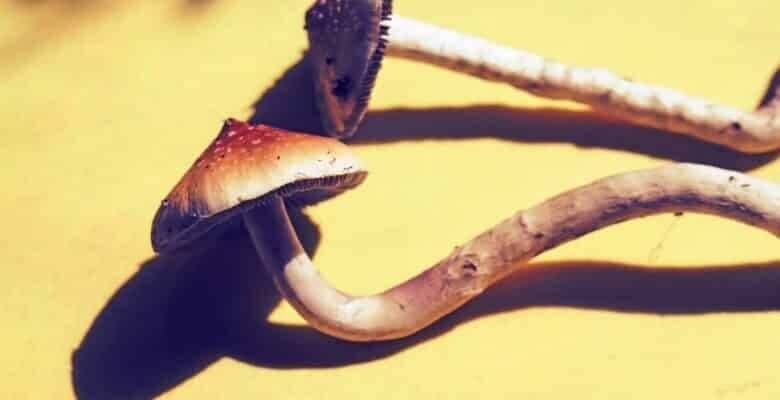
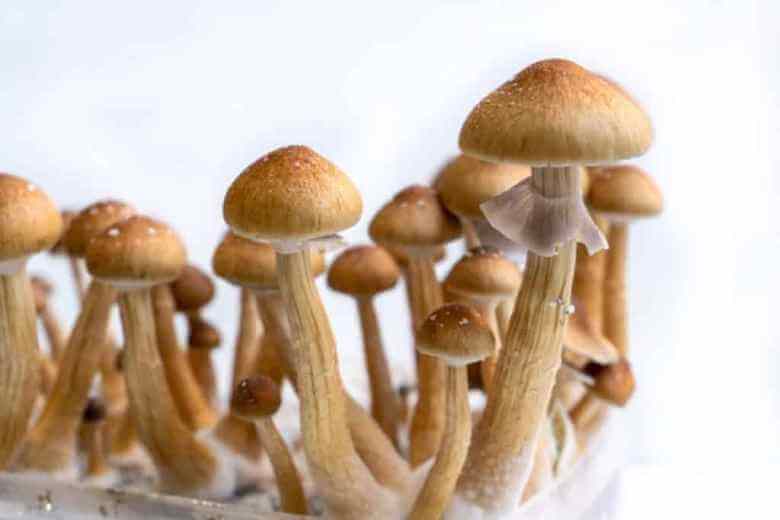
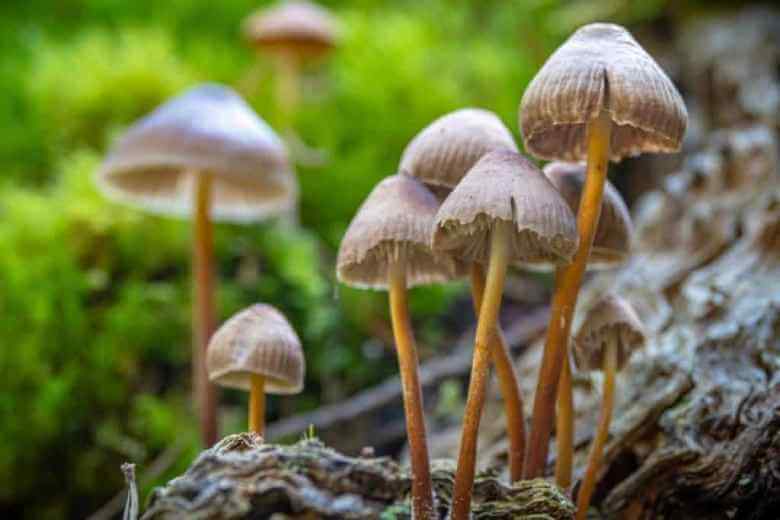
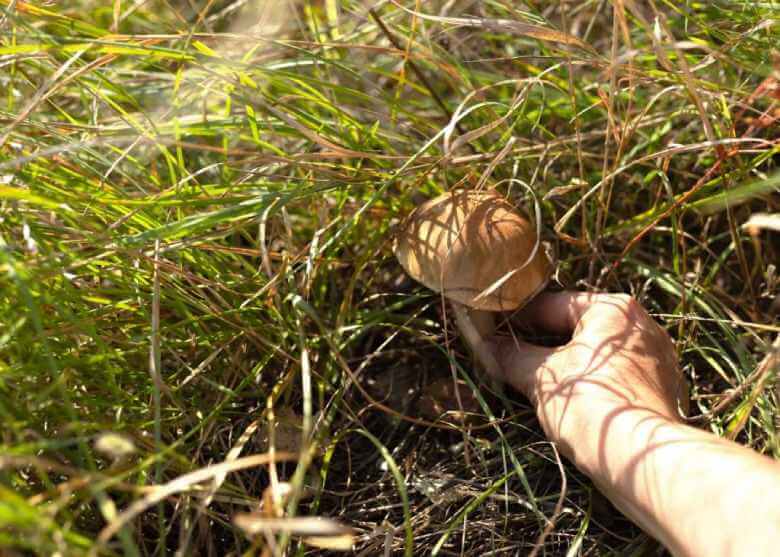
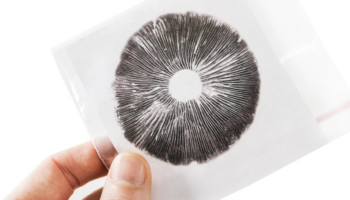

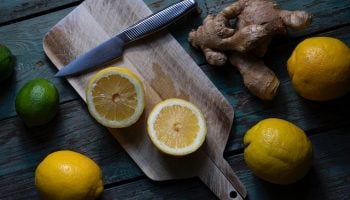



Photo of mushroom near Louisville Kentucky USA
Being suffering from depression for over 10 years now. It was hectic and difficult for me as i always had to fight the thoughts of death and suicide. I started taking mushroom chocolate bars and it has been of great help and value to me. With the intervention of megamicrodose.com
I have been able to pass depression and i am in a more conscious and enlightened state of my life. It Has been a beautiful journey but not an easy one…and am happy i feel better and..i have never been more connected to the universe and see the world differently
Thank you for sharing your story Vian. We’re so glad psilocybin mushrooms have helped you heal.
We are so happy to hear that, Vian! Yes, mushrooms have been a source for alleviating depression for many. Thank you so much for sharing your powerful story.
his is a truly enlightening discussion! The increasing focus on the medicinal potential of psilocybin underscores the importance of understanding its origins. It’s fascinating to learn about the diversity of the Psilocybe cubensis and others genus and the widespread distribution of psilocybin-containing fungi across different habitats and genera. This knowledge not only deepens our appreciation for the natural world but also highlights the potential for further exploration and discovery in the realm of psychedelic medicine. Thank you for shedding light on this captivating subject!